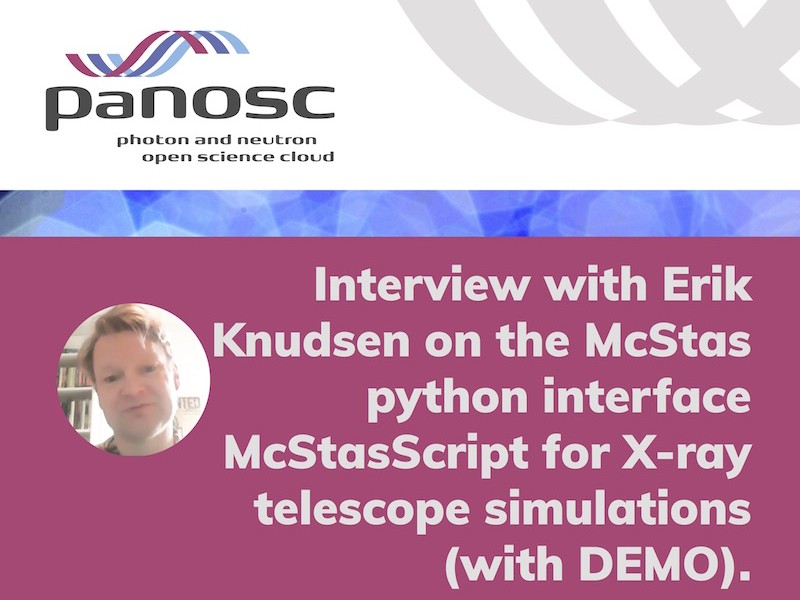Watch the interview with Erik Knudsen on the McStas python interface McStasScript for X-ray telescope simulations (with DEMO).
In the frame of the H2020 PaNOSC project we interviewed Erik Knudsen (Physics Dept. at the Technical University Denmark – DTU, and observer in PaNOSC WP5) on the McStas python interface McStasScript for X-ray telescope simulations. WATCH THE INTERVIEW HERE: https://youtu.be/WO0Tw8qxS-4 Erik collaborates with DTU Space, which has been designing a new telescope, NuSTAR, and is currently designing a new flagship mission for the European Space Agency, called Athena, a very large telescope to be launched in 2030. A new telescope design always requires careful simulation, as well as ray tracing. Instead of reinventing the wheel by building yet another ray-tracer for this particular telescope, Erik and his team have re-adapted what was already available. In fact, Erik has been developing the ray-tracing code for x-ray scattering experiments and optics’ simulations, and is the main author of McStas’ sibling, McXtrace. McStasScript is a python interface to McStas, which has a looping feature, allowing to easily implement a simulation where there are a lot of similar objects, or devices, as in the case of telescopes, which have many similar mirrors. In the video interview, Erik gives an example of the simulations of the NuSTAR telescope with AstroX/McXtrace using the McStasScript python package. WATCH THE INTERVIEW HERE: https://youtu.be/WO0Tw8qxS-4 Link to github repository: https://github.com/ebknudsen/AstroX_notebooks/tree/main/NuSTAR
Keywords
EOSC, European Open Science Cloud, PaNOSC, X-ray telescope simulations, McStasScript, McXtrace, python



